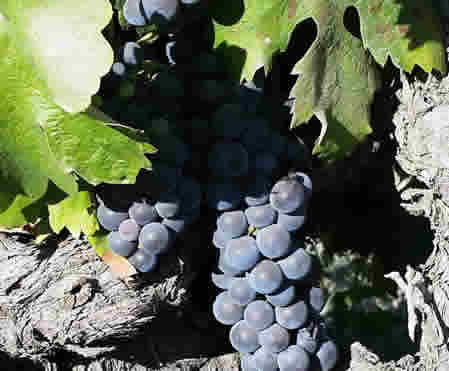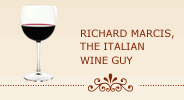the remarkable wines of salento
Salento, a sub-peninsula in the Puglia region of Italy, also known as the ‘heel’ of the boot gracefully encapsulates a host of beautiful towns and bucolic landscapes that attracts thousands of tourists year-round.
Salento, despite lying in the most sunny and hottest part of Italy’s Puglia region, holds reserves of fertile soil suitable enough to grow almost anything. It gets this great property from the Puglian coasts that border the Ionian and Adriatic Seas. The seas provide limited but adequate amounts of water and the sea breezes provide a cooling effect that helps moderate the high daytime temperatures of the Salento.
Italians, especially from northern Italy, view Salento as a place where they can come to enjoy the sun, beaches, admirable cuisine which draws its exuberance from the fresh and locally-grown vegetables on these fertile lands, and the eminent local wines. Tourists are also attracted by Salento’s numerous historic buildings and vast and poetic landscapes marked with vineyards and olive groves. Brimming with large estates and extensive vineyards, the Salento has much to offer wine-tasting enthusiasts.
Major Varieties of Wines Produced in Salento
The allure of Salento’s wines is based primarily on traditional red grape varieties found throughout the region. But more importantly, there has been a dramatic shift away from the hastily-made, rustic wines of the past towards more structured wines with good aromas and flavors that display a sense of place. Slowly but surely, Salento wines are gaining stature and increased worldwide attention as a new generation of quality-oriented producers demonstrate what the Salento is capable of producing.
Some of the major varieties of wines produced in Salento include:
Primitivo – This major southern Italian variety has been genetically determined to be descended from a dark red Croatian variety named Crljenak. Primitivo is both the  name of the grape and the wine it produces. Primitivo translates as “the early one” due to the fact that it is an early-maturing variety. The wine is one of Italy’s oldest and most classical wines. One clone, Primitivo di Manduria, has been determined to be the same variety as Zinfandel commonly grown in California and other parts of the New World. Primitivo can be made in a variety of styles ranging from ones with dark inky colors and strong tannic tones to sweet, dessert-style ones like Dolce Naturale. Depending on the style of wine the alcohol will vary from 14 to 18 percent.
name of the grape and the wine it produces. Primitivo translates as “the early one” due to the fact that it is an early-maturing variety. The wine is one of Italy’s oldest and most classical wines. One clone, Primitivo di Manduria, has been determined to be the same variety as Zinfandel commonly grown in California and other parts of the New World. Primitivo can be made in a variety of styles ranging from ones with dark inky colors and strong tannic tones to sweet, dessert-style ones like Dolce Naturale. Depending on the style of wine the alcohol will vary from 14 to 18 percent.
Chardonnay – This is a white wine produced from green-skinned grapes. It is an “international” variety that has found a comfortable home in Puglia and other regions of Italy and is one of the most popular varieties used in the production of Italy’s best sparkling wines. The taste of Chardonnay wine varies from crisp lemon to creamy peach and pineapple depending on the oak-aging of the wine, vinification procedures and the ripeness of the grapes. Chardonnay wines from Puglia and elsewhere in Italy typically tend to be leaner and crisper than Chardonnay from elsewhere. The alcohol content typically ranges from 13.5 to 14.5 percent.
Vermentino – This warm-climate, light-colored grape is grown widely throughout Puglia and southern Italy in general. Vermentino wines typically have citrusy aromas, complex flavors and a subtle, almost almond-like, pleasant bitterness on the finish. The wines have a crisp, zingy freshness and generally low alcohol, averaging about 11 percent alcohol by volume.
Negroamaro – This native variety is grown almost exclusively in Puglia where it makes flavorful, high-alcohol wines. The Negroamaro grape is used to produce red and rosé wines, some of which are single varietals but more often is blended with other varieties such as Primitivo or Malvasia Nera. The alcohol content of Negroamaro wines typically varies from 13.5 to 14.5 percent.
A Guide to the Salento Wineries
The exquisite varieties of Italian wines come from a beautiful blend of connoisseur art and craftsmanship practiced by the wineries of Salento. While some wineries are hundreds of years old, Salento’s wineries have evolved over time to encapsulate modern techniques in terms of vinification and aging while also paying homage to traditional varieties and winemaking processes. Here are some of the local wineries that are a must-visit for any wine enthusiast.
The Big Players
#1: Tenute Rubino
Tenute Rubino has four production estates scattered throughout Salento and an administrative office in Brindisi. The estate’s total vineyard area stretches over 275 hectares (679 acres) and produces over 1.2 million bottles a year. While the estate has an extensive lineup of wines it emphasizes those made with varieties native to the Salento area. This includes, for example, Susumaniello, an extremely rare grape variety grown almost exclusively in the Salento area. While usually used as a blending grape, Tenute Rubino’s highly-regarded Torre Testa is made entirely of Susumaniello.
The estate offers different wine-tasting options tailored to match the different tastes and experience levels of wine tasters. Numero Primo is a special event offered by the winery that combines winery and vineyard tours with wine tasting and estate-prepared foods in one event.
#2: Mottura Vini Del Salento
The effort of four family generations over a 150-hectare (370 acres) vineyard has led this business to the elevated stage it is on today. The oldest vines are almost 60 years old while the youngest espaliers are around 10 years old. Though they have a variety of wines, a few popular ones include Le Pitre (Silver Medal holder at Decanter World Wine Awards & Brussels) and Villa Mortura (Bronze Medal holder at International Wine & Spirit Competition).
#3: Leone di Castris
The company was established in 1665 by duke Oronzo, a descendant of the Spanish viceroys in Italy, who, enchanted by the Apulian landscapes, decided to move out from Spain and relocate his personal business to southern Italy. With over 300 years of wine-making experience and passion, they have a very large variety of wines that includes Five Roses, a high alcohol wine made with 80% Negroamaro and 20% Malvasia; the renowned Salice Salentino, a fruity wine made of Negroamaro and black Malvasia; and the Donna Lisa, made in both white and red varieties
The Small-is-better Wineries
#1: Cantine Baron
This winery has 8 hectares (19 acres) of vineyards located 400 meters above sea level. Founded in 2004 they have grown over time and under the guidance of oenologist Vincenzo Mercurio, now produce a total of 95,000 bottles of red, white and rose wines a year. Some of their famous wines include the Marsia Paestum red IGT 2014; Primula Rosa IGT 2016; and Falanghina IGT 2016.
#2: Azienda Agricola Salvatore Magnoni
This is a family-owned winery that underwent a major restoration in 2000 that included a renovation of the cantina and a complete replanting of their 6-hectare (15 acres) vineyard, replacing the Sangiovese and Barbera with Aglianico. Their wines are prepared with natural yeasts and their uniqueness lies in preserving the classical character of the wines while enhancing their aromas and flavor profiles. The exquisite Aglianico wines produced by this winery include Rosso del Ciglio; Primalaterra, which is aged in oak casks for 20 months and 4 months in the bottle; and Primalaterra Riserva, which is aged for an additional 12 months in French oak barriques.
#3: Vetrère
The Vetrère winery was started by sisters Francesca and Annamaria Bruni. Annamaria holds a degree in Agriculture and focuses her personal attention on their organic and historic vineyards which date back to the 1600’s. Francesca has a degree in business and focuses on production and marketing which blends the new with the old. Together, they create unique, high-quality red, white and rosé wines that are a blend of tradition with modern winemaking concepts. One of their must-try wines is 2015 Cré, a white wine made with Fiano grapes that was awarded a prestigious bronze medal at the Decanter World Wine Awards.
But the list doesn’t end here. Salento is crammed with locally produced, high-quality wines from both small and large wineries, making it a lovely place to explore, sample and taste wines in the region where they are produced.
Marco Margarito
http://www.liquorista.com
November 13, 2017
Marco was born and raised in Lecce and started travelling around the world after graduating with a degree in European Literature. Through his writings and website his goal is to share his culture and traditions with other similarly-inclined wine and food enthusiasts.
Help keep this website ad-free and independent.
Consider making a contribution to support the work of WineWordsWisdom.com.


